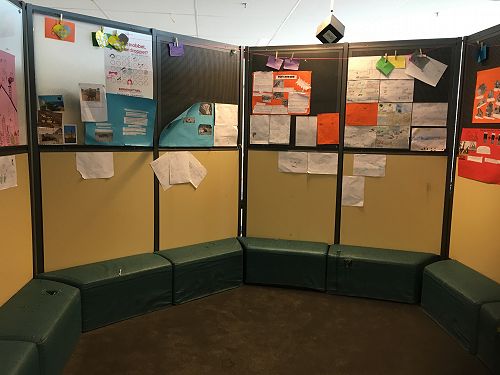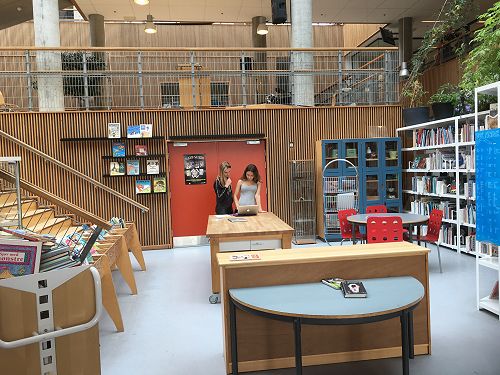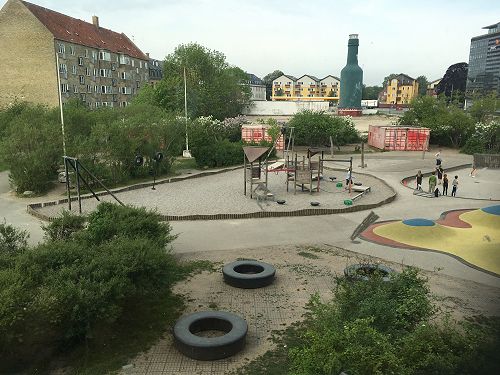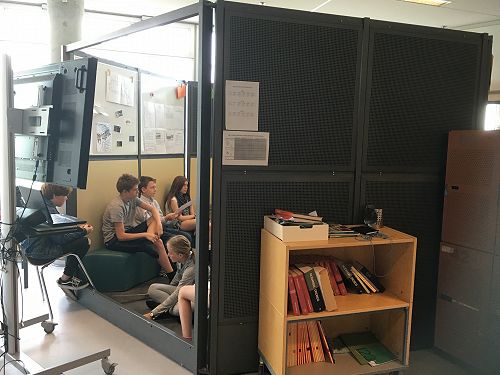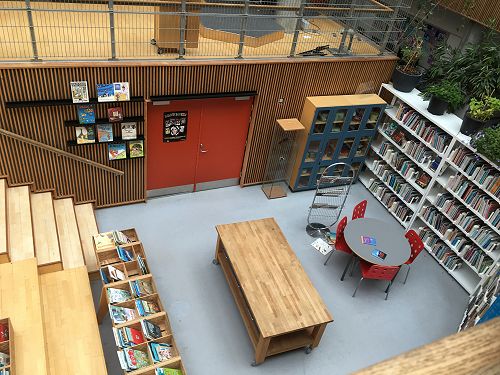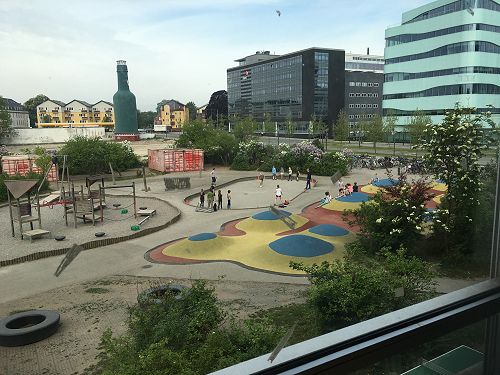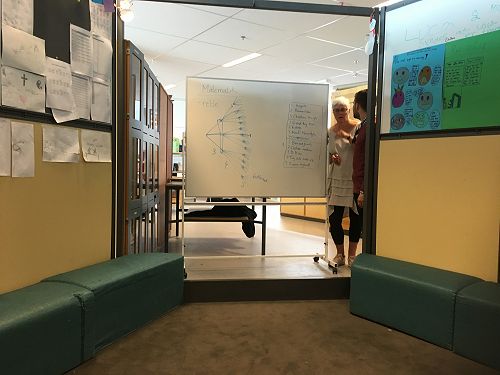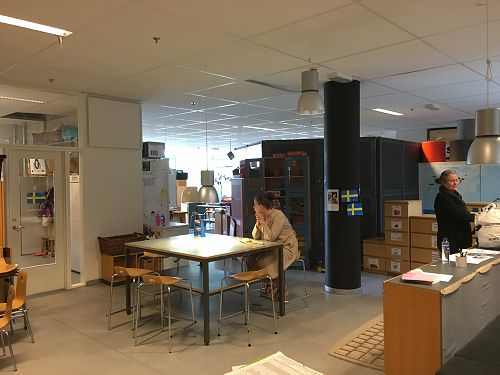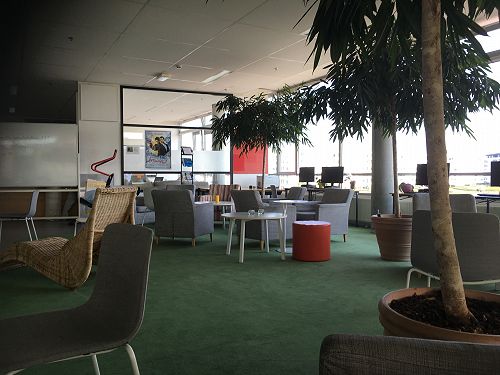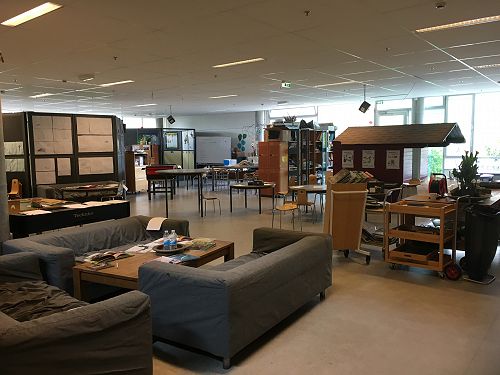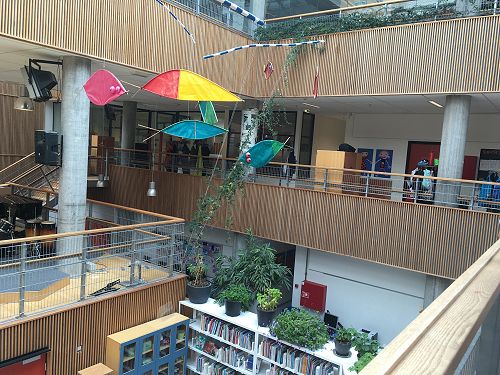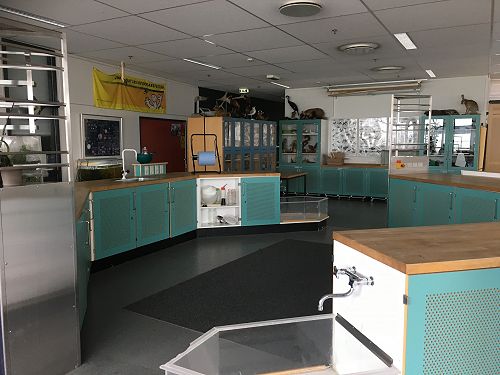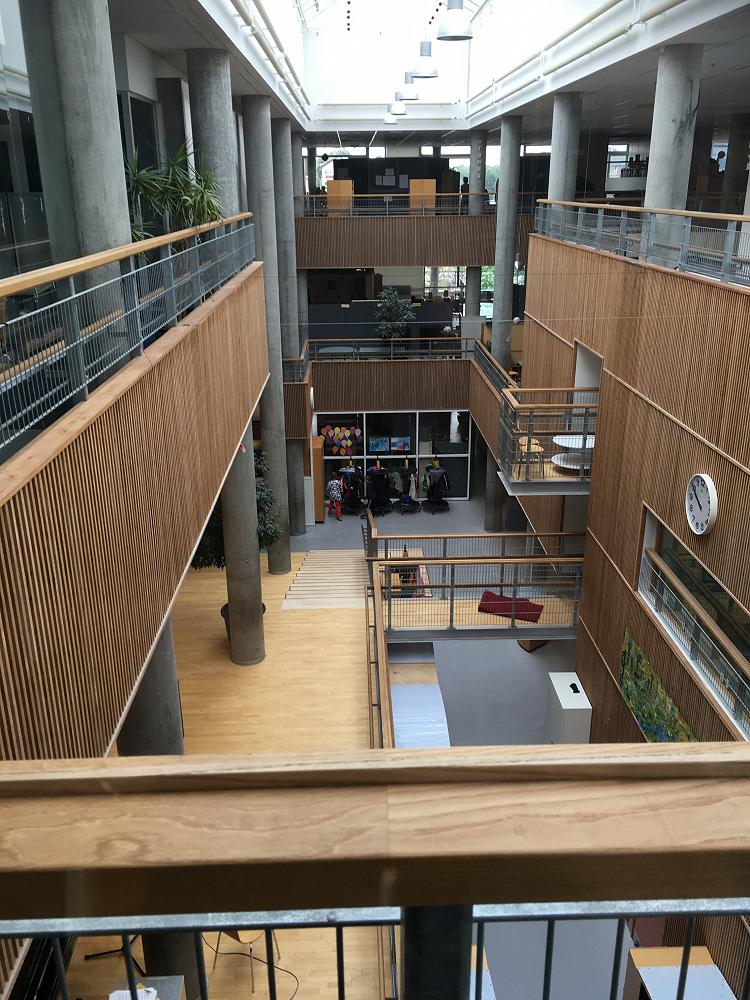
Hellerup Skole, Copenhagen: Part 1
Hellerup School was built in 2001 with a capacity for 700 students. Its then, ground-breaking design, was based on personalised, agile learning spaces, entirely without classrooms.
Today, it currently houses 650 students and approx 50 teachers. There are three classes at each year group level. Teaching and learning is arranged around learning home zones instead of classrooms. Each learning zone is a home base for 3-4 classes. The learning zones are shared with the pedagogs who take the after school programme. The building is multi storey with connecting staircase areas utilised for learning. On one staircase, the walls have been enclosed and a room to view multi-media presentations is the result. Internal timber cladding is a feature and gives a warm feeling with lots of natural light. The library zone is central on the ground floor and adds a communal feel to the environment.
There are around 100 students per learning hub with about 4 teachers plus support staff. The design incorporates lots of breakout spaces including:
- rooms within rooms, tiered seating areas, breakout spaces, specific areas for art / science.
- Physical activity encouraged eg climbing walls /table tennis inside building.
The space at Hellerup is very open, so structures have been introduced to create sound barriers: hectagonal ¾ wall “rooms” for up to 27 students to meet with one teacher for class discussion/sharing in a round format.
One separate closed off classroom space- some tiered seating in back of this space made from recycled pallets.
The staffroom is a comfortable space encouraging staff to relax in an informal atmosphere.
I was fortunate to spend two days at Hellerup School, hosted by Lotte Mylenberg, a 7th-9th grade teacher. I was able to get an overview of the site and then spend a day following a group of students in Year 7-9 (14-16 yr olds) around their regular programme.
Organisation for learning: Currently there are 3 classes of 20-25 students at each grade level; each grade is housed in a learning hub. Because the spaces are totally open, two octagonal ‘rooms within rooms’ in each learning hub are used as home rooms for two of the classes. They provide a quiet space where teachers can work with the larger class, without disturbing other teachers and students. Students usually meet there at the start of each lesson, with the teacher, before moving out to work in small groups or independently in the flexible open space available for their grade. There is a larger space that is used if two teachers wish to start a lesson together , which is not uncommon.
All grade 7-9 students and their teachers are housed on one floor and they work very collaboratively. This is atypical compared with the way the rest of the school choose to operate. Part of the reason that this collaborative practice has been maintained, is because of Lotte. She has been at the school since it first opened and has sustained the systems and organisation for collaboration as teachers have joined and left the team. In the 7th grade they have managed to organise timetables so all the students have math together giving them opportunities to collaborate. The organisation for timetabling for Grade 4-6 is problematic and a barrier for this type of work to happen at this year group level this year.
All students in Grade 7-9 have access to an ipad or computer- many bring these from home; the school will provide one if required. In 4-6 grade they have 1:3 access to ipads.
In general, across the school, grade teachers mostly work with the same groups of students within their specialist areas, while planning programmes of work together .
At Y0-3 there are 4 classes in the learning hub. They are all only present together 1 day a week as on the other 4 days, one class is timetabled to go outside in an education outside the classroom activity. I have found this to be very common in the Danish schools I have visited, to date.
Generally, but definitely in the first 4 years at school, children are taught in mixed ability groups and peer support and group work is encouraged.
Reporting to parents: This happens 4 times a year when the teacher sits with the child and writes the report. The online platform is used to do all tasks expected of a Danish teacher- planning and assessment. So teachers enter data and results as they complete units of work. The interview with the child formalises this with a sentence or two that reflects their effort and next steps.
The teachers then have face to face interviews with parents and these are the key form of reporting. Parents can access the online profile of their child and read the comments and view the planning objectives. There is no other separate written report!
Gallery
